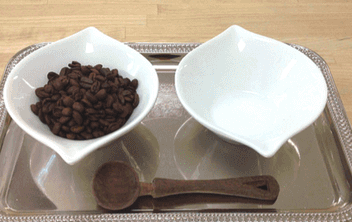The Purpose and Benefits of Practical Life Work
- Brightonview Montessori

- Dec 9, 2019
- 3 min read
Updated: Feb 22, 2020
If you walk into a typical Montessori classroom, you might be surprised to see children handling delicate glass pitchers with great care as they pour water. In another corner of the classroom, a 3-year-old carefully uses a dustpan and brush to sweep up small snippets of paper. Most adults don’t expect such young children to be capable of using these items, yet, if given the opportunity, they do so quite readily! This is what Maria Montessori discovered in some of her early studies of children when she was developing her philosophy. This discovery would inspire her to create practical life work, a fundamental curriculum area for Montessori students.
So, what is practical life work? Practical life work involves activities that teach skills which are useful for children in their everyday life. Some common work includes transferring beans with a spoon, pouring, using a knife, wiping a table, sweeping, preparing snacks, polishing shoes, learning to tie a bow, and many more. While these tasks may seem simple to adults, Montessori discovered that they offered many benefits for children. Here are some of the main benefits of practical life:
Concentration
As Montessori, herself said, “The first essential for the child's development is concentration. The child who concentrates is immensely happy.” After children acquire the ability to concentrate, they can learn many other things.
However, young children don’t usually have the capacity to concentrate for more than a few minutes. Practical life activities provide the perfect tasks for children to begin to develop their concentration. Starting with the most simple practical life activities for toddlers, which involves moving objects from one bowl to another with their fingers, children begin to grow their ability to concentrate and finish a task. As they try harder and harder activities, they are able to concentrate for longer and longer.
Fine Motor Skills
Another benefit of practical life activities is that children improve their fine motor skills. Whether they’re carefully moving a spoon or doing up a buckle, children must move their fingers and hands carefully to achieve their goals. All practical life activities help children develop their motor skills. For the toddlers and young children, this helps prepare them for the later important work of learning to write.
Independence
Finally, practical life activities build independence. When children feel that they can feed themselves and dress themselves, they develop independence. Usually, young children have a natural drive to do things “all by myself.” Practical life activities help children realize this desire.
Achieving independence is an end in itself. However, it also helps children build self-confidence. This is essential for their success as they go on to learn harder and harder things. By developing self-confidence, children learn to trust their abilities and build an “I can do it” attitude.
As you can see, the lowly practical life activities provide important benefits for children. By engaging in this important work, children prepare, not only for their continuing learning but also for real life! When children practice tying bows, it helps them tie shoes. Or, if they practice pouring water between pitchers, they can then serve their own milk when eating cereal.
So, embrace practical life in your home as well! Encourage your child to help out with chores and make it possible for your child to help serve meals and cook. The benefits are too good to miss out on!









Comments